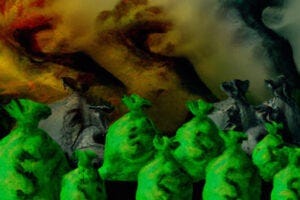Read: Barnacles May Help Reveal Location Of Lost Malaysia Airlines Flight MH370
Also today
Climate’s Ledger: Science Poetry Friday!
Recreational Nitrous Oxide Use Is No Laughing Matter
Paper Drinking Straws, Cups Bring Their Own Health, Environment Problems
Formerly Depressed Patients Continue To Focus On Negative
New Quantum Device Generates Single Photons And Encodes Information
How The Meat And Dairy Sector Resists Competition From Alternative Animal Products
Breast Size Affects Women’s Attitudes To Exercise
Mysterious Neptune Dark Spot Detected From Earth For The First Time
Japanese Squirrels Develop Human Hereditary Diseases With Aging
Certain Gut Conditions May Be Early Warning Signs Of Parkinson’s Disease
Common Supplements Might Reduce Natural Hearing Loss
Climate Change: Emperor Penguin Breeding Fails Due To Antarctic Sea Ice Loss
Discussion about this post
No posts
















